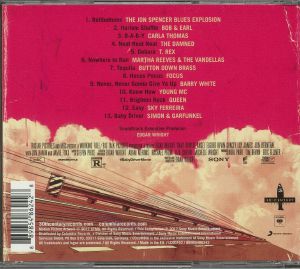
If you are using Windows 98 or Windows 95, verify the computer is running in 32-bit mode by clicking Start, Settings, Control Panel, double-click System, and click the Performance tab. Additional information on bootable disks is on our boot disk page. However, if the CD-ROM does not work, refer to the next and final possibility. If the CD-ROM does work from MS-DOS, this indicates there is a Windows corruption issue.
Baby driver soundtrack discs drivers#
If you attempted the recommendations above, try booting from a Windows 98 diskette or another bootable diskette with CD-ROM drivers to see if the CD-ROM works from MS-DOS. If the computer can boot from the disc, you are encountering a Windows driver related issue. If you attempted the recommendations above, boot from the Windows disc to see if the computer can detect and boot from the disc. Try booting a CD or bootable diskette Windows 2000, XP, Vista, 7, and later users

It's also possible that the drive is bad and needs to be replaced. If the CD-ROM drive is not in the Device Manager, the drive's cables may not be connected properly. Reboot the computer to reinstall the CD-ROM drive. If listed with a yellow exclamation mark or red X, remove the CD-ROM by highlighting the drive and pressing the delete key. Within Device Manager, verify the CD-ROM has no exclamation marks or red X's. In Windows Vista and later, click the Device Manager link on the left side of the System window. In Windows XP and earlier, click the Hardware tab and then the Device Manager button.

If, after cleaning the drive and CDs, you still get errors, it's likely the disc drive is bad. For instructions on cleaning your CDs and disc drive, see the computer cleaning page. If all but one or two discs fail, the disc drive is bad or dirty.

Make sure you have tested more than one CD in the disc drive, as it may be one CD that is bad or dirty. If a CD-ROM or DVD-ROM disc drive in your computer is not reading discs correctly, the following tips and information may help you fix the problem.


 0 kommentar(er)
0 kommentar(er)
